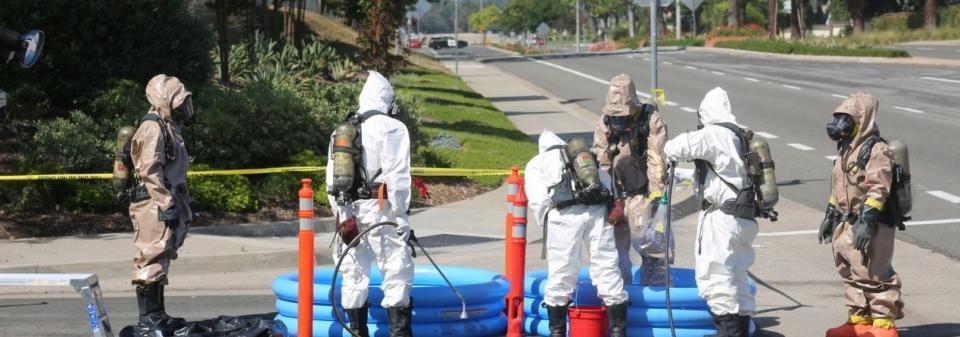Hazardous Materials Accidents
Hazardous materials accidents may occur in a variety of ways and can involve an almost infinite number of different toxic or hazardous materials, each of which may have different characteristics, re-activities, levels of toxicity and types of effects on human health.
Types of hazardous materials accidents include:
- Industrial plant accidents.
- Transportation accidents (aircraft, railroad, and highway accidents).
- Upturned pipelines (including natural gas lines – see Gas Leak information.
The variety of potential accidents and materials makes it impossible to present comprehensive procedures in this general guideline. Nevertheless, some basic procedures are generally applicable:
For industrial accidents involving the release of toxic or hazardous materials into the indoor or outdoor atmosphere:
- Evacuate the area immediately! All personnel will cooperate with management and evacuate the building or area as soon as possible.
- Do not turn any electrical switches on or off! Eliminate all open flames!
- During evacuation, observe wind direction and evacuate crosswind or upwind to the evacuation assembly site or alternate.
- After Evacuation, Call Emergency 9-1-1 and report the release.
- Predesignated and fully trained personnel should where protective equipment and take appropriate planned actions to control the situation in accordance with established procedures.
- Personnel not preassigned or trained for response teams should not return to the area until the fire department announces that it is safe.
- If there is contact with chemicals, wash them off immediately. Discard contaminated clothing.
- Don’t attempt to rescue someone who has been overcome by fumes unless you have proper respiratory equipment.
For transportation accidents, or pipeline accidents outside of industrial facilities, the person(s) who discovers the accident and knows or suspects that toxic or hazardous materials may be involved should:
- Observe the wind direction and move to a crosswind or upwind location. Call emergency 9-1-1 immediately to report the accident, then return to an upwind or crosswind location close enough to the accident to warn others who may approach the scene.
- Do not turn any electrical switches on or off! Eliminate all open flames!
- Upon arrival of the fire department, withdraw as instructed to a safe distance and direction.
- If the transportation/pipeline accident is near this facility, notify the building Emergency Manager.
- The Emergency Manager should contact the fire department Incident Commander and await instructions regarding possible evacuation or other actions that may be requested.

